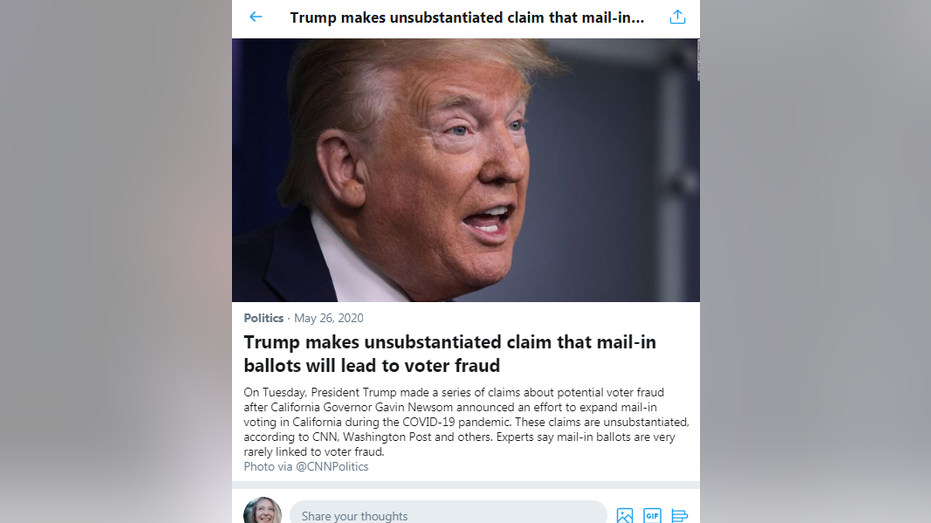How Twitter's fact check works
Twitter has added fact-check labels to posts from President Trump and Chinese foreign ministry spokesperson Lijian Zhao
Twitter adds fact-check labels to some posts the website deems to be misleading.
The social media platform has added fact-check labels that read, "Get the facts about [subject]" to posts from prominent figures including President Donald Trump and Chinese foreign ministry spokesperson Lijian Zhao regarding mail-in ballot fraud and the origins of the novel coronavirus, respectively.

Trump fact-check label (Twitter.com)
A company spokesperson told FOX Business that the platform's labels are meant to make it easier for users to find additional context on a specific subject so they can make their own informed decisions about information they see on the site.
| Ticker | Security | Last | Change | Change % |
|---|---|---|---|---|
| TWTR | NO DATA AVAILABLE | - | - | - |
"If we determine a Tweet contains misleading or disputed information that could lead to harm, we may add a label to the content to provide context," a page on Twitter's Help Center reads.
TWITTER CRACKS DOWN ON MISLEADING CORONAVIRUS INFO
Labels on misleading media contain links that lead users to a page of information about a certain subject that Twitter deems accurate. These fact-check pages start with a paragraph debunking a misleading claim and explaining a more detailed take, followed by articles and posts about the topic from prominent sources.
The Twitter spokesperson said these pages contain relevant, credible information about a given topic.

Trump fact-check (Twitter.com)
The social media site recently apologized for mistakenly adding fact-check labels to posts that were not factually inaccurate in its effort to block false information related to coronavirus and 5G wireless technology, highlighting a flaw in the company's fact-check-labeling process.
POLITICIANS TWITTER HAS FACT-CHECKED
"In the last few weeks, you may have seen Tweets with labels linking to additional info about COVID-19. Not all of those Tweets had potentially misleading content associating COVID-19 and 5G. We apologize for any confusion and we're working to improve our labeling process," the site tweeted from its Support account.
The platform said that going forward it hopes to "improve this process to be more precise" by showing "fewer labels on unrelated Tweets."
GET FOX BUSINESS ON THE GO BY CLICKING HERE
Twitter does not allow users to post misinformation that may interfere will elections or cause harm or violence; it also does not allow manipulated media on the platform, such as deepfake videos and images that have been Photoshopped in a realistic and misleading way.
Such content may be labeled with a tag that reads, "Manipulated media," according to Twitter's Help Center.




















